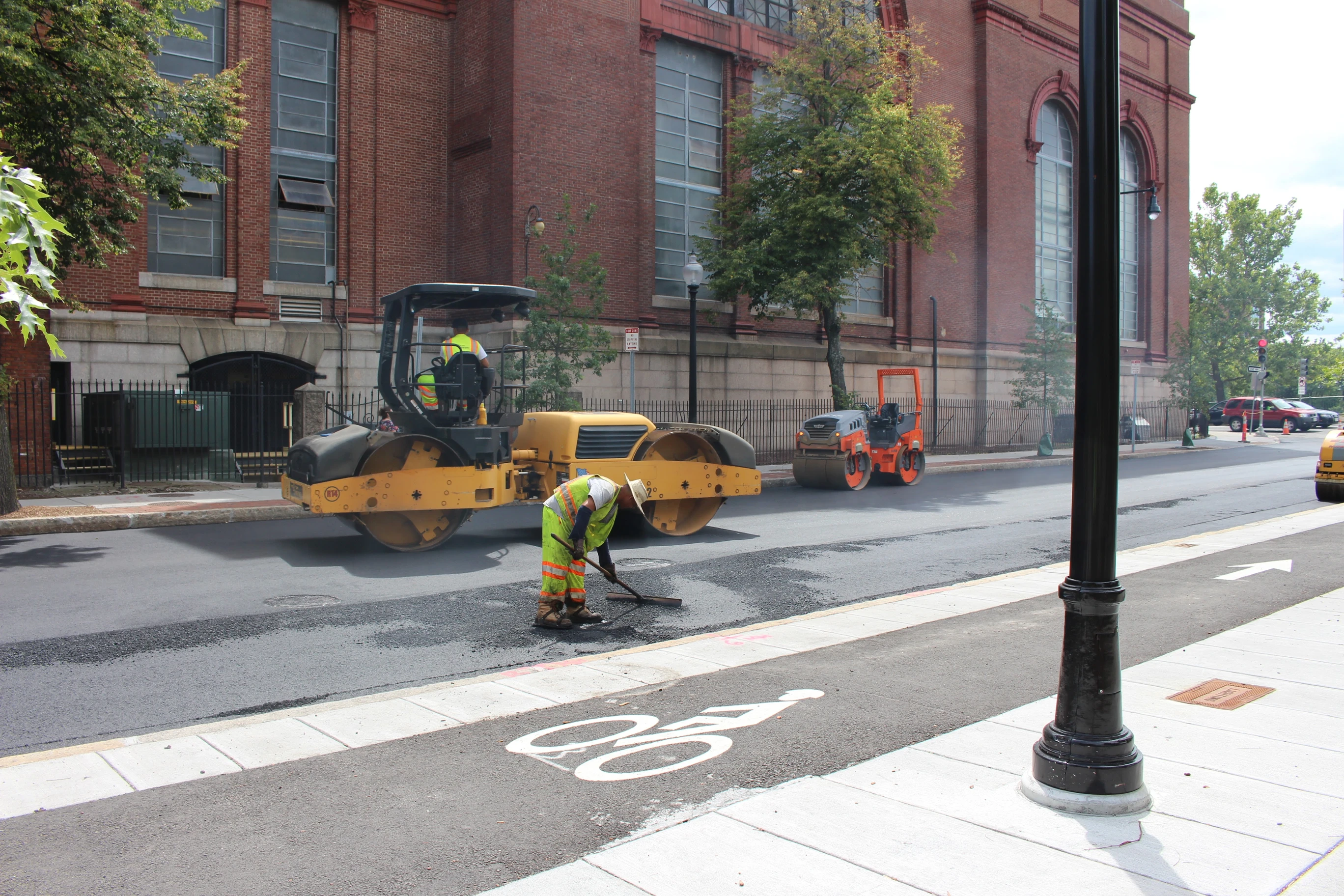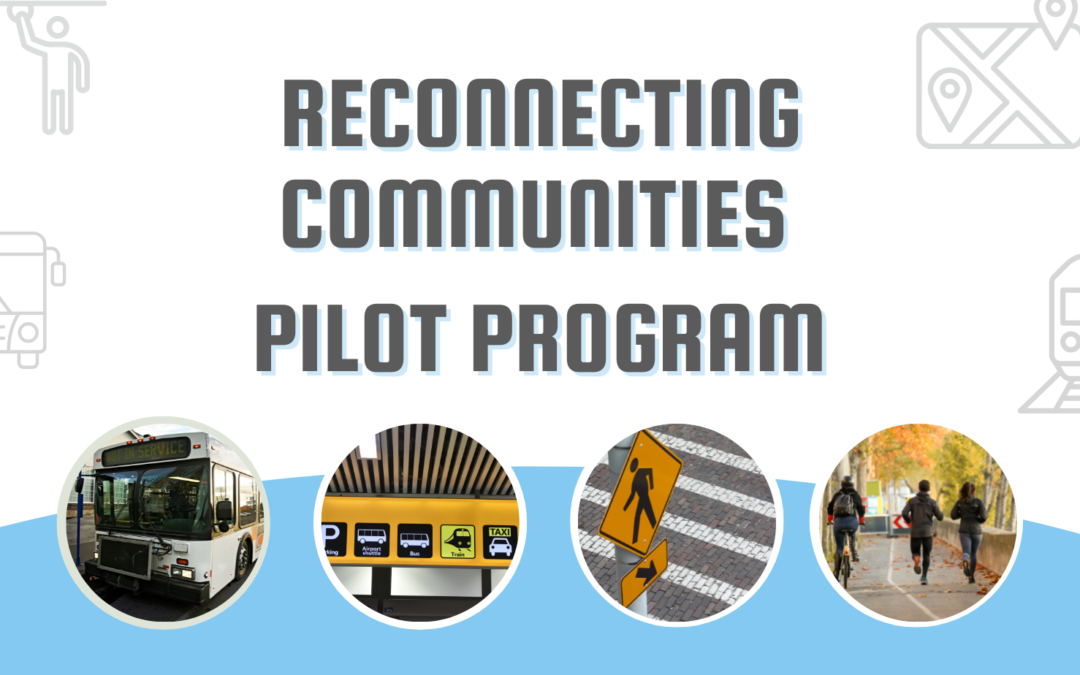The October 13th application deadline is fast approaching…
We are fast approaching the deadline to apply for the Department of Transportation’s Reconnecting Communities Pilot Program (RCP). Applications must be submitted by midnight Thursday October 13, 2022.
This is a notable landmark as the Reconnecting Communities Pilot Program is part of the recent Bipartisan Infrastructure Bill. This discretionary grant program has been funded with $1 billion over the next 5 years to support projects designed to reconnect communities through transportation infrastructure. States, local governments, Tribal governments, non-profits, and metropolitan planning organizations who are looking to apply should submit applications through grants.gov.
Specific information can be found on the Department of Transportation’s Website, and a summary can be found on their Fact Sheet.
Overview
The Reconnecting Communities Pilot Program was established by the Bipartisan Infrastructure Bill (BIL) is specifically designed to provide funding through discretionary grants for reconnecting communities. The funding provides for planning and capital construction grants, as well as technical assistance to restore disconnected communities. Restoring community connection may be done by removing, retrofitting, mitigating, or replacing eligible transportation infrastructure facilities. Transportation infrastructure like a highway, road, parkway, or rail line can, through its design, create a physical barrier preventing community connection, and may even be inaccessible to those affected by its construction.
The program seems to act as an acknowledgement that not all transportation infrastructure projects connect people as they could, that the construction of things like highways can create rifts in a community, and separate people from others and economic opportunity. Barriers created by infrastructure include the physical impediments, high speeds of vehicles, grade separations, and similar factors that block mobility, access, and economic development within a community. This funding is unique in that it recognizes that reconnecting communities isn’t about just removing impediments, but also about retrofitting or mitigating transportation facilities to work better, allowing each community to use the funding in a way that best suits their needs to reconnect.

Planning Grants
One type of grant this program provides funding for is planning grants. These can be used by applicants to conduct feasibility studies, researching how a proposed removal, retrofitting, or mitigation of existing infrastructure will affect the community. Planning grants be used to fund the design process and other planning activities on transportation infrastructure. Organizations eligible to apply for planning grants include, states, units of local government, federally recognized Tribal governments, metropolitan planning organizations, and non-profits. On their website about the RCP, the Department of Transportation provides some examples of activities that could be categorized as planning activities, these include…
-
- Planning studies of current traffic patterns on the eligible facility proposed for removal, retrofit, or mitigation and the surrounding street network; transportation network capacity; alternative roadway designs or other uses for the right-of-way; impacts to the mobility of freight and people; impacts to the safety of the traveling public; cost; anticipated economic impacts and environmental impacts both human and natural.
- Public engagement activities to provide the public opportunities to provide input into a plan to remove and convert an eligible facility.
- Other transportation planning activities required in advance of a project to remove, retrofit, or mitigate an existing eligible facility to restore community connectivity, as determined by DOT.

Capital Construction Grants
The second type of grant the RCP makes available are capital construction grants. These may be used after all necessary studies and other planning activities have been completed. The inclusion of funding for both planning and capital construction grants means that both projects that are shovel ready, and projects that are in the early stages of planning may also use this program as a tool to advance community reconnection. Capital construction grants can be used for projects on existing eligible facilities. Facility owners are eligible to apply for this funding, however, a second party may also apply so long as the owner of the facility in question is a joint applicant. Like with planning grants, DOT’s website has included a list of eligible capital construction projects which include…
-
- Removal, retrofit, or mitigation of an existing eligible facility.
- Replacement of an eligible facility with a new facility that restores community connectivity and is sensitive to the context of the surrounding community.
- Preliminary and detailed design activities and associated environmental studies; predevelopment / preconstruction; permitting activities including the completion of the National Environmental Policy Act (NEPA) process; delivering community benefits and the mitigation of impacts identified through the NEPA process or other planning and project development for the capital construction project.
Technical Assistance
The third major section of this grant opportunity pertains to the role of technical assistance. DOT will prioritize technical assistance to communities who need it most, focusing on economically disadvantaged recipients who are underserved and overburdened. The purpose of this technical assistance is to build organization and community capacity to engage in transportation planning and identify solutions. Some of the issues specifically identified for technical assistance include “reconnecting communities that are bifurcated by eligible facilities or lack safe, reliable, and affordable transportation options.”

The RCP is just one part of the much larger Bipartisan Infrastructure Bill, and it may still be difficult to immediately recognize projects that qualify for this specific opportunity. It is difficult to quantify the connectedness of a community, so the guidelines include some examples of projects like high quality public transportation, pedestrian walkways and overpasses, capping and lids, linear parks and trails, and main street revitalization projects. Senior Project Manager, Blythe Robinson, gave her insight into what kind of project the RCP could fund. Blythe explained, “An excellent example of a project that would be eligible today under this program was the ‘Big Dig’ project through downtown Boston which demolished the elevated section of I-93 through the city and replaced it with the Rose Kennedy Greenway (completed in 2007). This new park in a busy area of the city connected the Government Center area with the North End and installed a beautiful park in between. This had a multitude of positive effects including easing traffic congestion, connecting the harbor and downtown, enhanced housing and commercial opportunities and offered its residents a public park in which to gather and recreate.”

“In a bygone era, infrastructure projects focused on the movement of vehicles and rail as ways to spur economic development, which we now understand came at a cost of creating physical barriers in a community. This grant program gives communities the opportunity to plan for the future and how those barriers can be removed or changed to spur more inclusive economic development.
This program offers both capital construction and planning grants. So, communities who are not ‘shovel ready’ to begin such a project, they can apply for funding to conduct public outreach and design what would benefit their community. Projects that improve opportunities for disadvantaged populations are especially encouraged to apply.”
As the deadline approaches, the majority of your application might already be established, and what is left is likely crossing the t’s and dotting the i’s. DOT provides some tips and guidance for communities wishing to address these issues of connection and transportation infrastructure who don’t know where to start. They recommend the following starting assessments…
-
- Begin to identify your community’s challenges related to connectivity and barriers. This includes transportation barriers that make it difficult for community members of all ages and abilities to safely reach daily destinations like schools, jobs, grocery stores, parks, and healthcare services.
- Consider whether eligible facilities are located in underserved, overburdened, or disadvantaged communities. These communities may bear a greater burden from transportation infrastructure such as fatal and serious injury crashes, air and noise pollution or other public health impacts, broader community safety issues, or sustained community disinvestment. Also consider whether the infrastructure facility contributed to past community hardship including displacing historic populations, contributing to racial or economic segregation, or negatively impacting important cultural, historical, or sacred community assets.
The Reconnecting Communities Pilot Program, and the larger Bipartisan Infrastructure Bill provide unique opportunities to communities looking to identify and manage transportation infrastructure that has created barriers to community connection. Transportation improvement that acknowledges the necessity of creating connection and takes into account the broader needs of community building will be more effective and efficient at addressing the needs of the community. This opportunity is incredibly distinct in that it has tools for projects just beginning to address connectivity issues, and projects that are shovel ready. Even after this preliminary application deadline (October 13’th) the exciting work of planning and managing these projects is just beginning.

